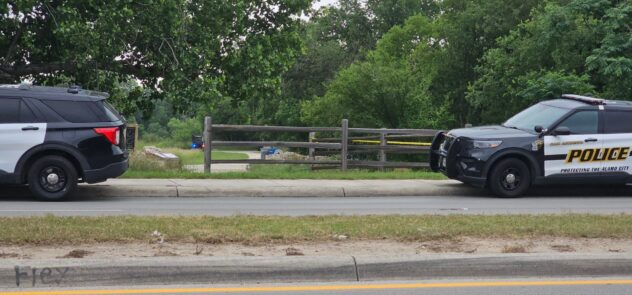Corpus Christi woman leaves Padre Island with possible flesh-eating infection after shark fishing

A Corpus Christi woman was left with a painful infection her doctor believes was a flesh-eating bacteria after she went shark fishing at Padre Island National Seashore on Oct. 2.
Carol Cox, 57, told mySA.com she was helping a friend unhook a fishing line from a 5-foot, blacktip shark when she suffered a cut. As she was straddling the shark, it thrashed against her ankles and grazed her skin, she said.
Cox, who has been fishing since she was 4, said she washed the cuts with clean, freshwater, as she has does many times before when she gets scratches from the hobby. However, 10 hours later on this occasion, she said her ankles were throbbing and very red, especially her left foot.
READ ALSO: Flesh-eating bacteria season is upon us. Here’s what you should know.
Cox said she visited a CVS clinic Oct. 5 and was told to treat the wound she thought was just a rash with antibiotics. The next day, Cox said the infection on her left foot worsened and became more painful.
“It was an extremely painful feeling,” she said. “My foot swelled up, and I couldn’t walk. It feels like someone is hitting you in the shin with a baseball bat.”
On Oct. 7, Cox visited her primary doctor, who told her she believed it was necrotizing fasciitis, a Vibrio infection known as the flesh-eating disease. Because she was already on antibiotics, the doctor could not test Cox for Vibrio.
READ ALSO: San Marcos man dies after contracting Vibriosis while fishing near Palacios
Gregory Buck, an associate professor of biology and biomedical Sciences at Texas A&M University-Corpus Christi, told mySA.com in July that Vibrio naturally thrives in ocean waters. However, the presence of the bacteria grows in the summertime, when the water is warmer.
In Texas, there are about 15 to 35 cases each year with a peak between April and October, Buck said.
Cox was given more antibodies and is currently still healing from the infection. She noted the pain in less severe, but she said that she never wants to experience that again.
“The biggest eye-opening thing for me was how painful it really was,” she said. “Luckily, we got it soon enough, and we were able to take care of it before I lost a limb, or worse.”
According to the Centers for Disease Control and Prevention, necrotizing fasciitis is a rare bacterial infection that spreads quickly in the body and can cause death. Early symptoms can include a fever, severe pain and a red, warm or swollen area of skin that spreads quickly. It includes pain beyond the area of the skin that is infected.
Buck said there is no sure way to prevent a necrotizing fasciitis infection. However, basic hygiene practices can reduce the risk, such as washing your hands frequently with soap and treat any wounds promptly, even minor ones.
Priscilla Aguirre is a general assignment reporter for MySA.com | [email protected] | @CillaAguirre
















